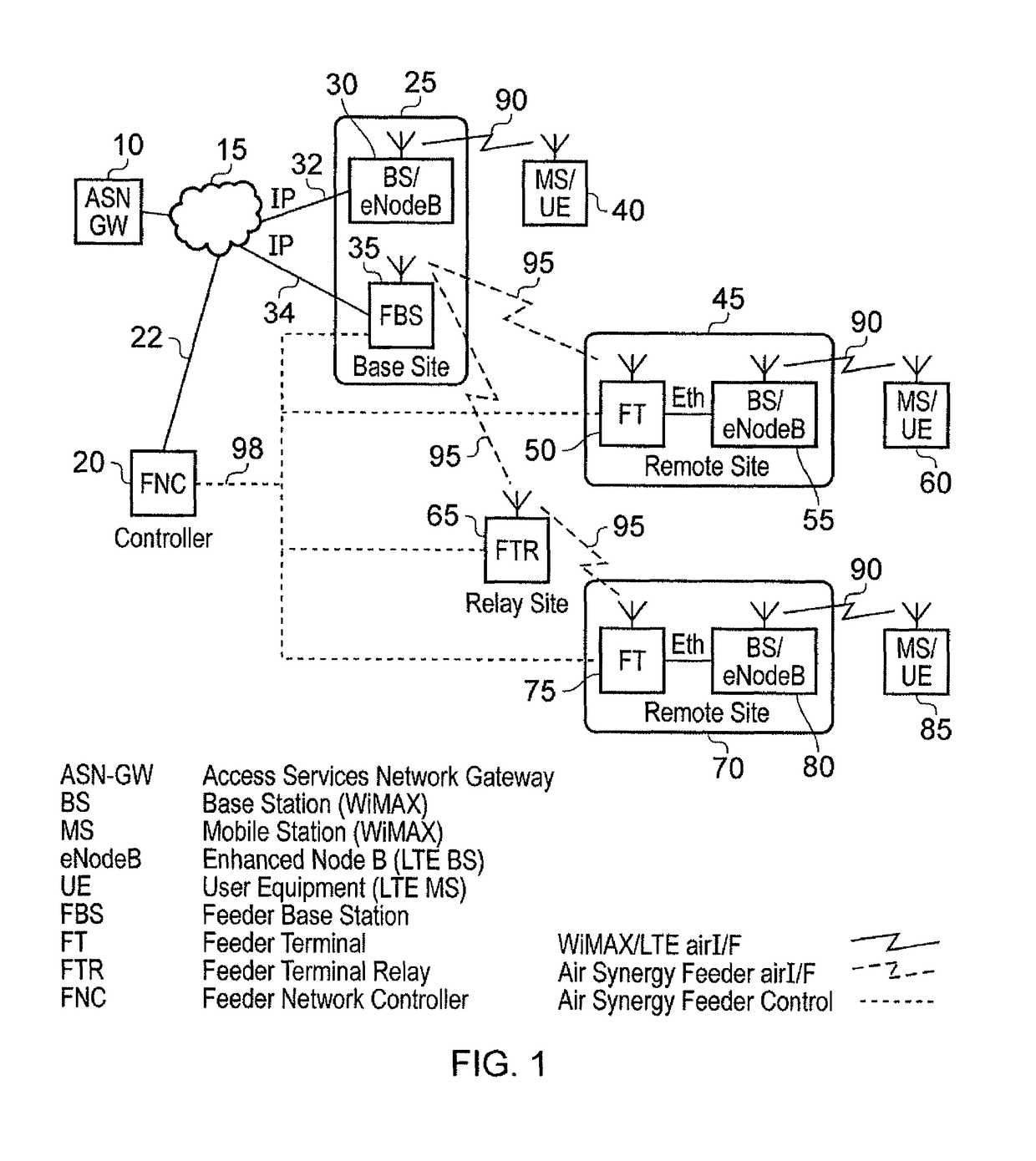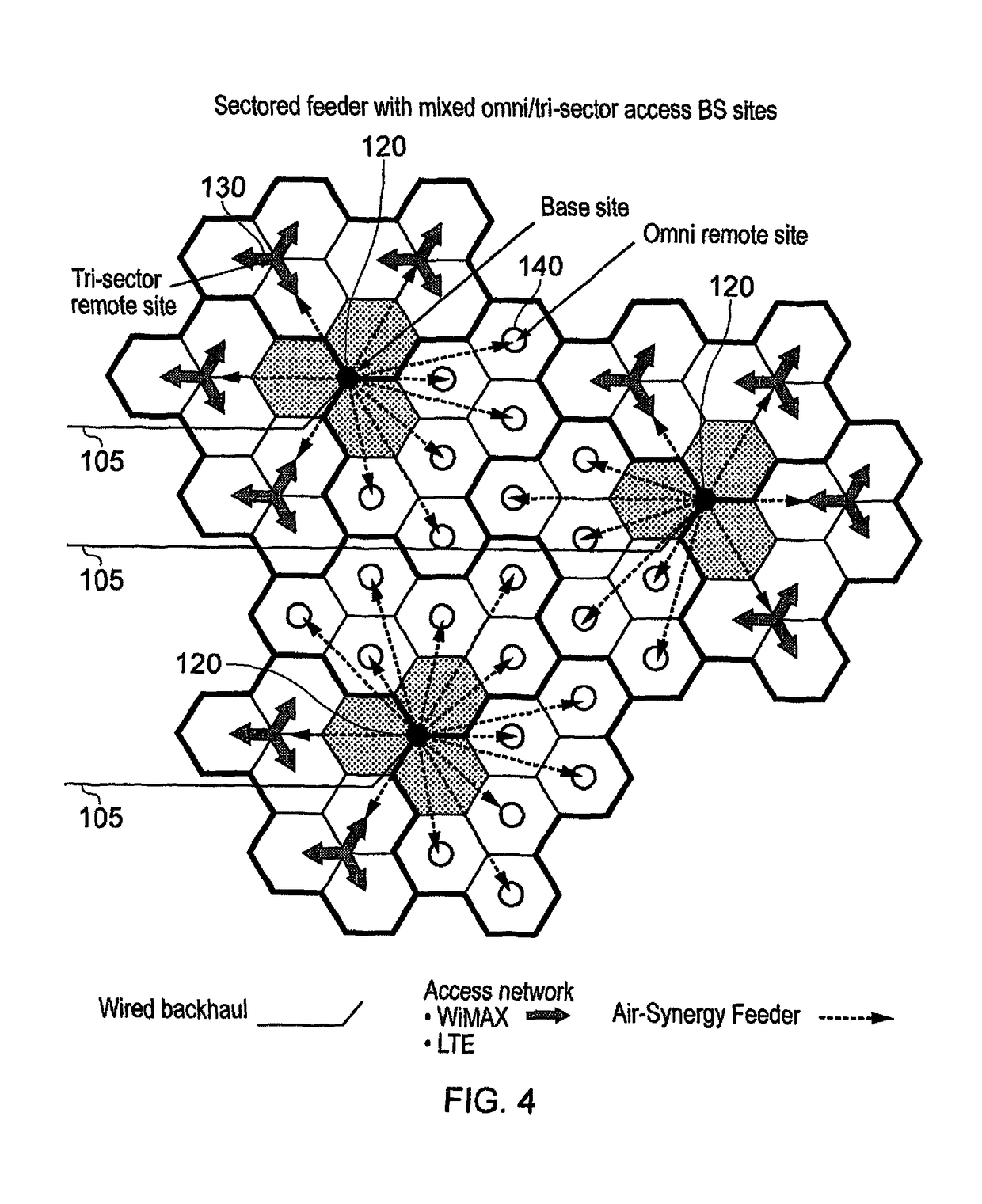Apparatus and method for controlling a wireless feeder network
a wireless feeder and antenna technology, applied in the field of antennas and methods for controlling a wireless feeder network, can solve the problems of increasing the cost of providing, significantly increasing the cost to the operator, and clearly increasing the cost, so as to achieve the effect of improving spectral efficiency and improving spectral efficiency
- Summary
- Abstract
- Description
- Claims
- Application Information
AI Technical Summary
Benefits of technology
Problems solved by technology
Method used
Image
Examples
Embodiment Construction
[0084]FIG. 1 is a block diagram schematically illustrating a network architecture including a wireless feeder network in accordance with one embodiment. As shown in FIG. 1, a number of access base stations 30, 55, 80 are provided in the conventional manner to communicate via a wireless air interface 90 with a number of mobile stations / items of end user equipment 40, 60, 85. Whilst for simplicity, each base station 30, 55, 80 is shown as communicating with a single item of end user equipment, it will be appreciated that in practice such base stations form point-to-multipoint devices enabling a plurality of items of end user equipment to communicate with an individual base station. The items of end user equipment may be mobile or fixed, and any one of a number of known wireless communication protocols may be used to effect the wireless links 90. For example, in one embodiment such wireless links may be constructed using WiMAX or LTE air interfaces.
[0085]The access network consisting o...
PUM
 Login to View More
Login to View More Abstract
Description
Claims
Application Information
 Login to View More
Login to View More - R&D
- Intellectual Property
- Life Sciences
- Materials
- Tech Scout
- Unparalleled Data Quality
- Higher Quality Content
- 60% Fewer Hallucinations
Browse by: Latest US Patents, China's latest patents, Technical Efficacy Thesaurus, Application Domain, Technology Topic, Popular Technical Reports.
© 2025 PatSnap. All rights reserved.Legal|Privacy policy|Modern Slavery Act Transparency Statement|Sitemap|About US| Contact US: help@patsnap.com



